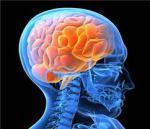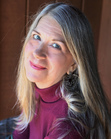Ann E. Michael's Blog, page 82
March 19, 2012
Cognition and storytelling
 Apparently, there has been considerable excitement in the humanities and literature worlds concerning new discoveries in neurology and cognition. And while I have been thinking and reading along these lines for years in my own auto-didactic way, I've only recently stumbled upon the texts that specifically explore this cross-fertilization of the arts and sciences.
Apparently, there has been considerable excitement in the humanities and literature worlds concerning new discoveries in neurology and cognition. And while I have been thinking and reading along these lines for years in my own auto-didactic way, I've only recently stumbled upon the texts that specifically explore this cross-fertilization of the arts and sciences.
AWP featured a standing-room-only panel on the topic of Cognitive Science and Stories that alerted me to the work of Brian Boyd (more books for the to-read pile), for example; and just this past week, Annie Murphy Paul contributed an opinion essay titled "Your Brain on Fiction" to the New York Times Sunday Review. Oliver Sacks has, of course, worked along this territory for many years, mostly from the neurological viewpoint with research that suggests we consider the relationship of brain science to art. Leonard Shlain has written intriguing books on the subject as well; though he focuses on gender and visual/textual creativity in his earlier work (see The Alphabet vs. the Goddess), his more recent Art & Physics: Parallel Visions in Space, Time, and Light takes on the "rational" brain (physics) and the world and work of art.
The science, which encompasses both 'hard science' such as neurology and social science such as psychology, uses fMRI brain imaging and other forms of feedback measurement to record the brain's responses to imagery, metaphor, descriptive writing, emotionally-evocative literary passages, and other stimuli to gauge how the human brain takes in such stimuli and which regions of the brain 'fire' when encountering the materials.
Associations rule. Reading is associative. The word "coffee," as it turns out, engages the olfactory regions; so does the word "cinnamon." Tactile word cues (velvet, sandy, rough) arouse sensory regions, notes Paul. We associate meaning with senses. Or perhaps senses evoke, in the human mind, associated meanings. This is one reason poetry engages its readers; poetry works via a series of different types of arousals by association–allusions to previously-known information, metaphorical associations by means of sensory-related responses, stimulation of brain regions by word-association, and also cultural or social association (contextual cues, which may also be physical). All of this means that the act of reading is an embodied behavior–we are actively encoding physical settings and sensations while we read!
Human brains fill in the gaps in memory and in event-series that may or may not be related. Some of these neurological studies suggest human brains seek patterns…and construct narratives. Hence, story-making may be something that evolved along with the human cortex while we learned that a growl in the bushes is likely to equal a hidden predator and that if we convey this information by narrative (or metaphor) it will be recalled more quickly by our listener. If the listener is offspring, and the lesson is remembered and used appropriately, the genes survive another generation. That scenario sounds pretty scientific/Darwinian; but to a writer or artist, the scenario is lush with the possibility of story-myth-legend-fiction-poem-art.
Storytelling facilitates sociality, claims Tim Horvath, who explained to the attendees at the AWP conference that sociality is the biologist's "reciprocal altruism." Because fiction meta-represents life, it simulates possible life scenarios that can help to foster understanding and offers a way to test out possible social reactions to behavior in a way that is low-risk for the reader. The reader can imagine, or play along, with the rebellious heroine and through this adaptive play (reading can be a form of play) learn how others around her might react if she were to try a similar form of rebellion. Indeed, Marilynne Robinson agrees that "The great virtue of the best fiction is to teach compassion."
I look forward to learning more about the cognitive side of human narrative. I love it when science and the humanities discourse with one another.








March 15, 2012
5 good things
Daniel Kahneman, in his book Thinking, Fast and Slow, describes psychological research that strongly suggests human beings have stronger responses to negative events or stimuli than to positive ones. That makes sense; for survival reasons, it is "wise" to be able to recognize threats or aggression rapidly. Once humans understand this fact of our natures, however, we ought to be able to put its effects into rational perspective…if we are rational human beings.
Kahneman cites a study that looked at marriages and found that, in a marriage the spouses described as "happy," each partner said or did five pleasant things for every one unpleasant comment or action. The five-to-one ratio turns out to be a steady one in other types of psychological research into mood, threat-response, and attitude assessments among employees, family members, and groups.
In other words, we have to do five nice things to outweigh the emotional effect of one unpleasant thing. Which is, by the way, irrational. A rational equation would be one-to-one for a neutral emotional grounding, and two nice events would (rationally) make up for one nasty remark. Philosophers would agree, but given that human nature is not as rational as we often like to believe, philosophers also readily understand the problem of what Stephen Covey has called "the emotional bank account." That one negative situation taints our moods pretty severely, even though it should not. The emotional bank account draws down very rapidly if we consider that 5-to-1 ratio.
I propose that we learn from this research to practice five actions as we navigate the challenges of getting along with other people:
1) Try harder to do those so-called random acts of kindness. Smiling is a good start.
2) Repress at least a few of our negative markers (frowns, sarcastic remarks, resentful sighs).
3) Identify more good things people do so we realize that good things do occur.
4) Try to teach ourselves to be more rational when negative things happen.
5) Remember that others are recalling the one bad thing, just as we do, and let it go.
It's harder than you'd think, but it isn't impossible. Neither easy nor hard: the middle way.
Here are five good things I encountered today:
Pansies (viola × wittrockiana). Daffodils (narcissus). Chickadees (poecile atricapillus). Shakespeare's Sonnet 55. Respighi's Ancient Airs and Dances Suite No. 3 (1932).








March 10, 2012
A different kind of difficult book
Elie Wiesel's Night.
Jerzy Kosinski's The Painted Bird.
André Schwartz-Bart's The Last of the Just.
Dominique Lapierre's City of Joy.
Dorothy Allison's Bastard Out of Carolina.
I've been posting about books that I love in spite of–or because of–their challenging material in terms of philosophical thinking or complex scientific explanations. It occurs to me there are other forms of "difficult," and that topic is yet another challenge for the reader to encounter. These are books I found hard to read because of subject matter, events, descriptions of things I cannot imagine, or maybe can imagine, facing.
Sometimes a book seems difficult for me on these terms because of where I am in my life; it might not be difficult to read at another time. An example of this sort of book is Franzen's The Corrections, which features among other characters a family patriarch in serious physical and mental decline. My family is experiencing something similar right now, and I cannot quite bring myself to open the book lying on the nightstand.
On the other hand, reading can help me get through tough situations. Maybe I'll get to The Corrections soon after all if I recall how fiction and poetry–especially the latter–have often been tools for coping or "processing." It was immensely difficult to read Marie Howe's What the Living Do close on the deaths (by AIDS) of three friends, but I felt understood when I read her work; I can't explain it any other way. This exchange is almost magical to me: I do not necessarily feel I understand the writer, but I feel the writer has understood me. Without knowing me. Without knowing a person like me would ever stumble upon and read the pages…yet the text makes me feel understood.
I love that feeling, even though the rational side of me cries "Magical thinking! Coincidence! Self-delusion!"
So that's art.
Some tough books to read: Gray Jacobik's Little Boy Blue, Chana Bloch's Mrs. Dumpty, Donald Hall's Without, Heidi Ann Smith's The Carol Ann Burns Story, Selah Saterstrom's The Meat & Spirit Plan, Allen Ginsberg's Kaddish, Gregory Orr's Gathering the Bones Together…and these books, mostly poetry, do not include the more traditional memoirs and non-fiction accounts of difficult events that are available to the reader. You could spend your entire life reading about the Holocaust, and some readers do just that.
Why would I willingly subject myself to disturbing reading? I kind of wonder about that myself; it's not the same impulse that makes me want to read a thriller or mystery novel. In those cases, there is a promise of entertainment in a voyeuristic form and the outcome usually promises a kind of satisfaction that these other books do not always offer (read: hope, redemption, solutions…)
But I will hearken again to something I heard Marilynne Robinson talk about (see my previous post on AWP). She suggested that literature teaches us compassion. Good art of any kind opens up a new kind of perspective, one that thrusts us out of our own comfortable, individual points of view and therefore allows us–in the safety of our own homes, secure in the knowledge that this is only a book and is not happening to us–to engage with the "other." When we feel empathy for a problematic character, when we feel we understand another person's plight, even a fictional person, we move away from narcissistic isolation and into engagement with other beings. And that is compassion.
And that is also art.








March 7, 2012
AWP conference
I got back from Chicago on Monday and have been trying to catch up ever since. Chicago hosted the 2012 Associated Writing Programs conference, where nearly 10,000 writers, aspiring writers, teachers, publishers, and students (often these categories overlap) converge to interact, interface, synthesize, network, inform themselves, and idol-worship.
For an introverted, reflective, crowd-shy person, the event can be overwhelming. I speak from experience.
Nevertheless, the conference generally provides me with tremendous food for thought in the form of books to read, authors to discover, concepts to familiarize myself with, pedagogies to explore, and considerable re-assessment of why I do what I do. Also, I meet people.
At a wonderful presentation called "Literature and Evil," for example, I was seated next to poet James McKean. We had an amiable discussion about teaching composition prep to freshmen before I figured out who he was. Here is one of his poems: "Bindweed" up at The Poetry Foundation site. For poetry people, that's big-time. The thing is, I hadn't read any of his books; it would have been really weird to say, "Oh, I recognize your name. I don't know your work at all, though. Sorry." So we chatted about an area of common ground: teaching.
I tracked down McKean's books via Iowa's Writing Program and did a bit of internet sleuthing for samples of his poetry. Turns out I really like his work. So I'm going to be reading James McKean's poems and meanwhile be thinking, what a nice man he is! Such a devoted teacher, down-to-earth. He shared some of his classroom approaches and I shared my teaching experiences with similar students. We talked about the differences between community college adult students and 18-year-old freshmen. We didn't talk about teaching creative writing, but we did talk about the low-residency MFA and his current crop of students. He is much younger than my dad, but he reminded me of my father, a midwesterner and professor interested in what Marilynne Robinson, Ha Jin, and Paul Harding had to say about evil and literature.
They had lovely and compassionate and interesting things to say, in my opinion. I suggest you read their books. And, while you are at it, pick up a collection of James McKean's poems. He's a terrific poet–and a very nice man.








March 6, 2012
More difficult books
Some weeks back, I posted about reading "difficult books." It occurs to me that there are different kinds of difficult books, and perhaps different kinds of motivation for reading them.
In my previous post, I addressed why I read philosophy. I also read books on subjects like string theory, fractals, physics, economics, psychology, and other topics that might be considered difficult, especially for a person who is not a scholar in any of those areas. One example is the book I'm reading now, Daniel Kahneman's best-seller Thinking, Fast and Slow. Kahneman is a psychologist who won a Nobel Prize in Economics, and this book explores how human beings make decisions, are rational or irrational depending on circumstances and how information is presented, make judgments, develop intuition and biases, and learn or fail to learn from mistakes. He's a fairly good writer for the layperson, staying away from jargon and taking pains to explain his work clearly for the non-psychologist, non-economist, and non-mathematician. Nonetheless, this book–while wonderful!–is not easy material to read. One reason is that the text is about thinking, so (like philosophy) the endeavor is entirely metacognitive. Also, Kahneman's findings directly challenge many of the things we think we know about ourselves. That sort of book is inherently difficult.
Another book written in lively anecdotes avoiding too much technical language but that I found difficult all the same is Stuart Kauffman's At Home in the Universe. Kauffman explains Boolean logic in a way that helped me to understand not just the basic premise but how Boolean operates in terms of randomness and the development of algorithms. His book, however, takes for its subject complexity theory. You can tell by the name of the theory that this material's a little challenging. Furthermore, he begins by writing about chemistry, a science in which I have almost no foundational understanding. I learned much from his work about self-organization of things like molecules and stellar systems, and this book enabled me to read his more theoretical text on "reinventing the sacred" with deeper understanding (and even a bit of skepticism). But easy to understand? No.
Joao Magueijo introduced me to the research and theories of young cosmological physicists through his book Faster than the Speed of Light, a book that is laugh-out-loud funny in places and written with the casual tone of having a conversation with an enthusiastic and possibly jerky scientist while at a university-neighborhood pub (there were more than a few asides in his narrative, most of which dealt with university or science politics). I know more physics than chemistry, but I can't do the math. I had to re-read some of the pages in Magueijo's book to figure out where he was going with his potential discoveries. I read the book years ago, yet it stuck with me; recent news about possible faster-than-light particle movement reminded me instantly of the work this team was doing in the late 90s.
Science and philosophy are difficult; and while books that involve the relationship between the disciplines (such as Hofstadter's now-classic Gödel, Escher, Bach and Kauffman's Reinventing the Sacred, to name only two) are not necessarily twice as difficult, they cannot be categorized as easy-to-read, even when the author is a marvelous writer. True "System 2 thinking" (see Kahneman) means constant engagement with the text, and our brains simply get tired. But they also get exercise and plasticity from the enjoyable work of reading what is hard, a workout I find exhilarating.








February 25, 2012
Kindred spirits
Kin=One's family and relations. [Merriam-Webster]
My parents bred, bore, and raised me. That's true for many of us human beings.
When I ask people about their parents, inevitably I learn that parents are people who are admired, influential, heroic, role models, (or sometimes, the opposite of these 'ideals').
My parents are, I have decided, kindred spirits. Kindred in the physical and specific sense, but also kindred in the more metaphorical, spiritual sense.
My dad's my intellectual kindred spirit, my mother acts more as my artistic and intuitive kindred spirit. Not to put too dualistic a point on it…
The influence they've had is behind us now–many years have passed since I relied on them for sustenance and a roof over my head, for discipline and social or academic guidance, or for artistic or other taste.
I admire them for their qualities but have long ceased putting either of them on a pedestal; they are realistic in admitting their failings and flaws–and often accurate because they are wise and smart and reflective and aware. (And so am I, within my specific limits.)
As we age, I cannot help but think of these things more often: what the meaning if inheritance is, really, in terms of the physical (DNA), the cultural, spiritual, intellectual, psychological, and emotional realms. Not to mention the philosophical, which is where my dad comes in, though my mother has her own form of philosophy I will probably never be able to explain adequately.
Kindred. A lovely word rich with metaphorical possibilities. And spirit…well, that's another day's work to explore.














